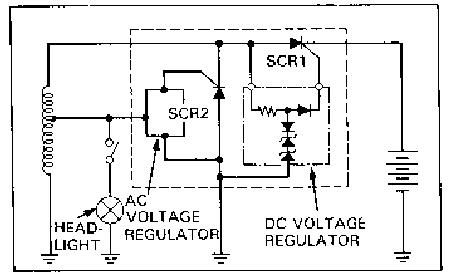you have the wrong regulator
you have a full wave R/R (needs a floating ground Stator)
You need a half wave R/R
this is what they look like

this is the inside

yellow connects to reg is used for ligjhts
white connects to regulator is used to feed regulator "must be used"
red out to batt,, not used
Black ground as is the metel case is ground also.
If you use one of these it will work No Problem.
Too use your reg/ref you need to rewire your stator for floating ground.
read this
mastercircuits.blogspot.com/2012/07/half-wave-to-full-wave-conversion.htmlThe LED's work but you have to connect them backwards. They only work one way they are diodes,,
you have the wrong stator for that regulator. you can rewire the stator and make it work, or get the regulator that goes with the stator you have.
this is what you got

this is your stator

this is the connections

Update------------------------------------------------
It is possible to use the 5 wire reg if you isolate the ground in the electrical system. Since you have a Rat setup and you will be wiring each circuit manually here is what you do.
Stator wire green and white go th AC input on reg.
Black wire and red wire from reg bond together.
Green from reg floating ground. This cannot be connected to the frame in anyway. It must stay isolated from the chassie.
The AC from the stator will now enter the regulator and be regulated at about 14 volts AC. To connect the lights connect to the AC lines from the stator. This will be full wave AC regulated at 14 volts.
Connect your CAP and other DC loads to the Red/Green out of the reg. Never connect the green to the Chassis ground because that is being used by the stator and you can share both.
update----------------------------
here is a diagram showing the connections

I hooked mine up this way and had a beautifully bright halogen headlight with leds tail and brake.
Headlight runs on AC fullwave AC. For max power to lamp.
the regulator shunts /regulates the AC side. The rectifier changes AC to DC for the DC output.
This works with no load at the DC side.
You can't measure the output with a meter so hook a lamp to the AC or DC side to test. A 10 watt will do. If you try to measure this with a digital meter it wont display the correct voltage because it is so ragged. You can look at it on an oscilloscope but who's got one of those laying around.

